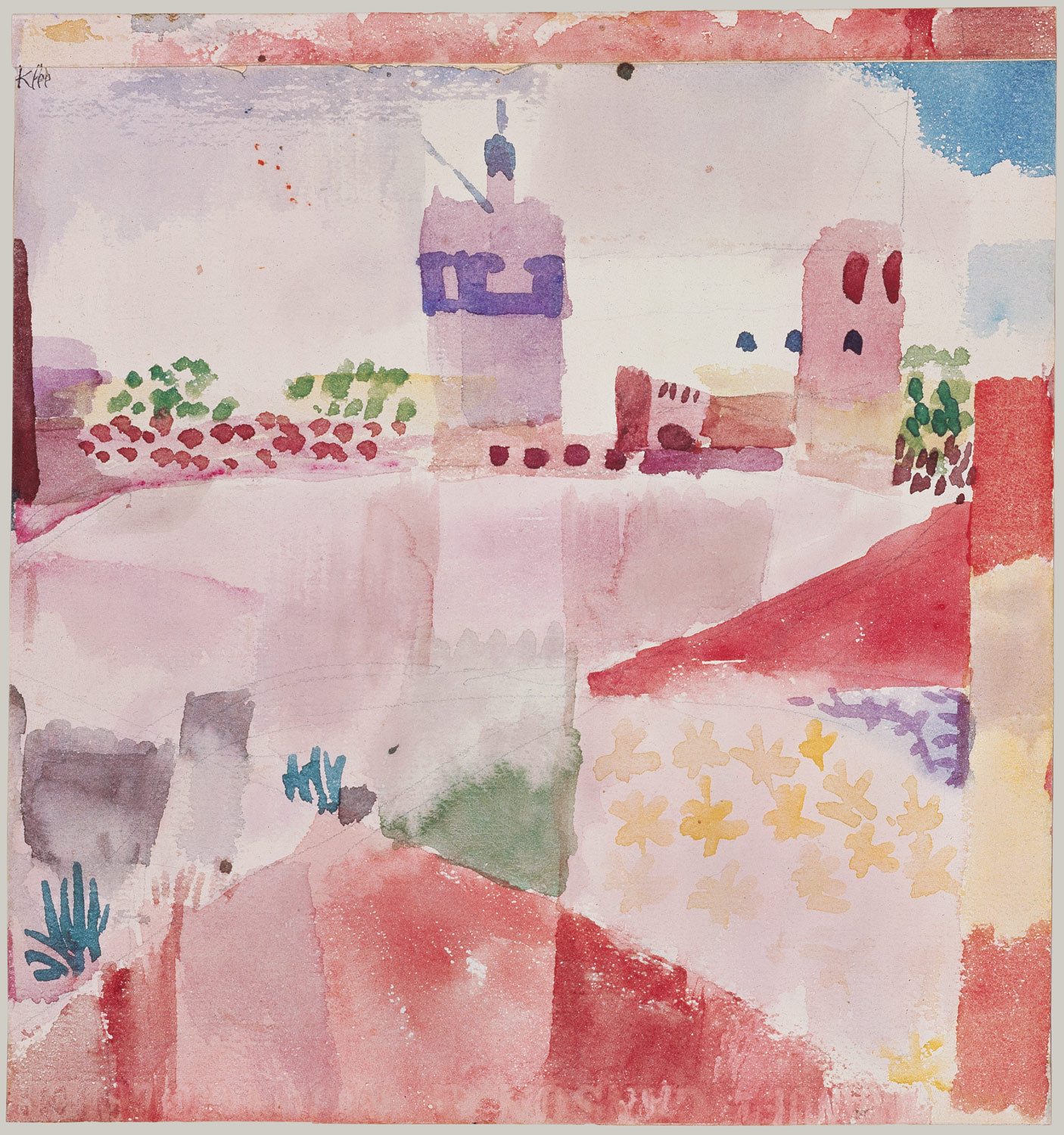I want to put myself up for a challenge, a challenge of interpreting a painting that does not fire up in my art chamber by first look. The reason for that is that I want to try to explore matters that I am not totally familiar or confident with.
After a weekend of thoughts and questions asked to different people with a little of interest in art, I have come to terms with this presentation.
It does not take a genius to find that this is a very abstract image, but yet I still wanted to find out why I personally choose to challenge myself with this image, but through the weekend, I found why this is an important presentation to me, and specifically me. There is an intense amount of coloristic possibilities in this presentation giving the opportunity to elaborate onto the tale that is going on.
The figures of the lower scape of the painting give it a characteristic poetic, imaginative border area of the figurative and the non-figurative. Like the seen and the not seen.
This is Hammamet today
One can argue that the stone in
front the beach is Mr. Klee's way to express the non-figurate. Willingly or
unwillingly, I have linked it to a style of painting that has been sweeping and
evolving the Middle East for a very long time.
For the first time ever, I want
to expose a painting (publicly) made by a family member (Mehdi, 2006) Damascus,
Syria. This painting is made with three other paintings to be exhibited soon.
1. http://en.wikipedia.org/wiki/Hammamet,_Tunisia

No comments:
Post a Comment